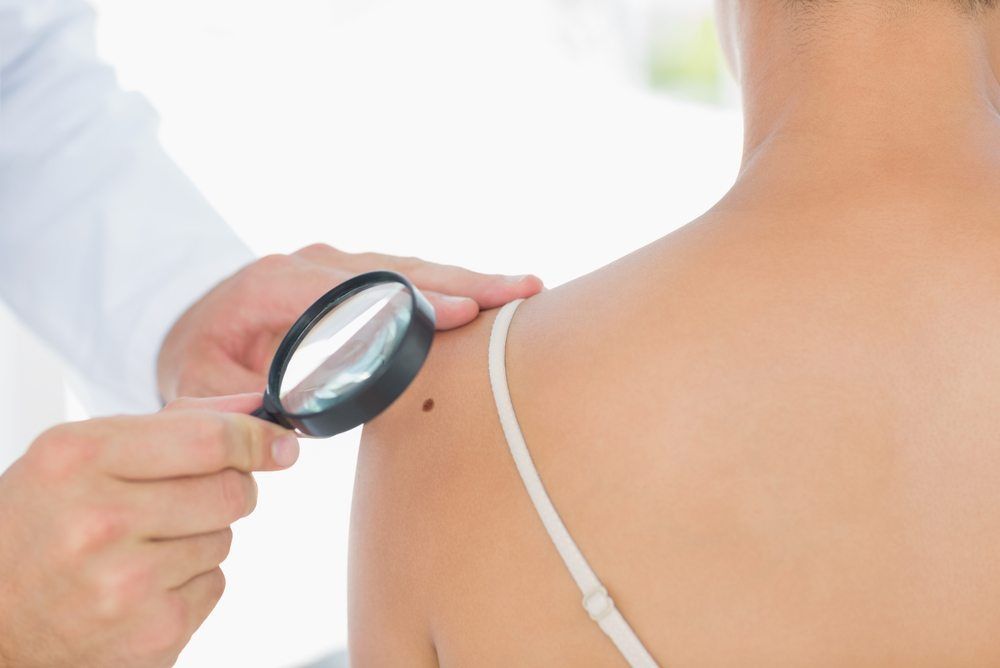Melanoma is a dangerous form of skin cancer that, although rare, is responsible for the greatest number of skin cancer deaths in America. Found in its earliest stages, melanoma is completely curable. But left untreated, this dangerous cancer can spread to other areas of the body. Anyone of any skin color or background can develop malignant melanoma though light-skinned people are most prone to it. Other risk factors include having more than 50 moles or having spent a lot of time unprotected in the sun or in tanning beds. In fact, the American Academy of Dermatology reports that people who visit tanning salons are 75 percent more likely to develop melanoma than their non-tanning counterparts.
Did you know?
- Melanomas can’t be diagnosed based on appearance alone – it requires a biopsy. However, the easiest way to spot a mole that may be melanoma is by evaluating it for the ‘ABCDE’s of skin cancer. They include:
- Asymmetry – Split into halves, most melanomas do not match.
- Borders – Melanomas often have irregular borders that aren’t well-defined
- Color – A melanoma is more likely to have multi-tonal hues
- Diameter – The diameter is often larger than 6mm, but can be smaller
- Evolving – Melanomas may seem to be shape-shifting or changing color
- Melanomas are also more likely to bleed, itch, or cause pain and irritation than benign moles.
Frequently Asked Questions
Should I be screened for melanoma?
If you have one or more suspicious lesions on your body, see a dermatologist immediately. Anyone can develop melanoma – even young adults and teenagers. The only way of knowing for sure if you have a melanoma is by having a biopsy performed on the mole or spot in question. Early detection means early treatment, which means a much higher chance of a positive outcome.
What types of treatments are available to melanoma patients?
If you have a mole that looks suspicious to your dermatologist, he or she may order a biopsy to determine the biological composition of the lesion. If cancer is found, the pathology report may indicate certain details about the melanoma, such as its stage. Early stage melanomas that have not yet spread to the lymph nodes may be removed during an office visit. However, patients with melanoma in more advanced stages may need to have some lymph nodes removed and undergo chemotherapy and/or radiation treatments.
What can I expect after treatment?
Cure rates for mid to late-stage melanoma are moderate, with stage 3 cancer 5-year survival rates ranging between 40 and 78 percent. However, if your melanoma was found and treated in the earliest stages of cancer before it was allowed to spread, you should be able to return to normal life after treatment (97 percent do). However, it is very important to take preventive measures to avoid future recurrences. This includes wearing sunscreen each day and avoiding UV exposure in tanning beds.


